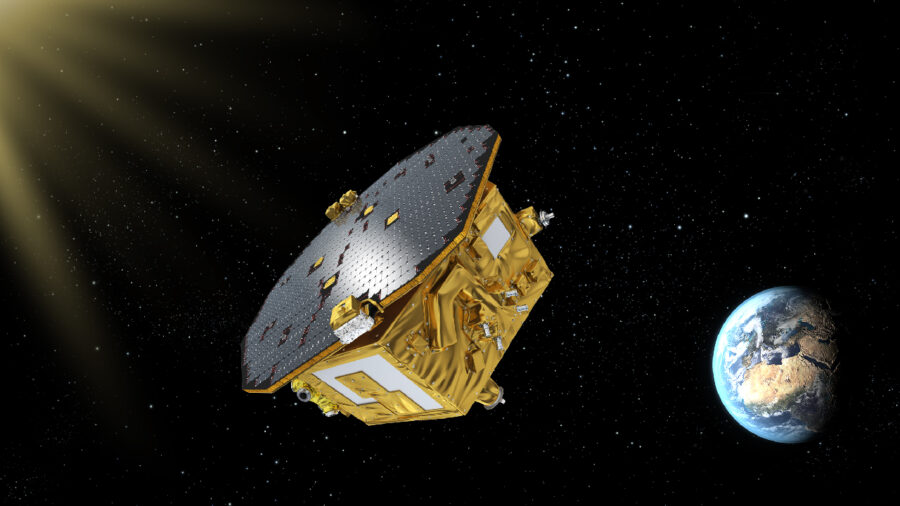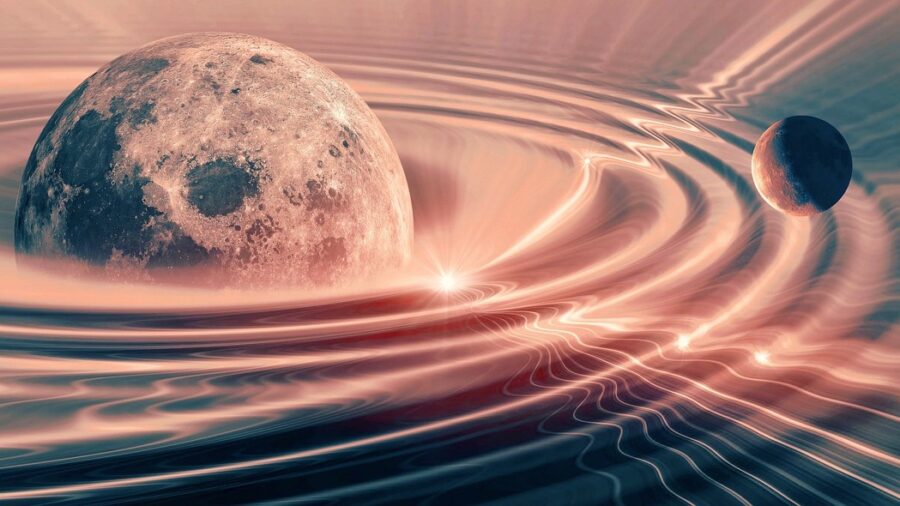Gravitational Wave Detector Revealed By NASA

NASA has unveiled its prototype for a space-based gravitational wave detector, capable of reading the space-time disruptions caused by cosmic phenomena. Using lasers to measure minute differences in distance between triangulated telescopes, the project is planned to go live within the next ten years. Space-based gravitational wave detectors are a massive improvement to the ones stationed on Earth because they are free from the interference of Earth’s atmosphere and disturbances from other technology.
A Joint Effort Between NASA And The ESA
The prototype gravitational wave detector is part of a collaboration between the European Space Agency’s (ESA) Laser Interferometer Space Antenna (LISA) and NASA to create a space telescope array for measuring gravitational waves. Separated by millions of miles, the new array will be able to measure minute differences in location, down to the size of the nucleus of a helium atom in order to detect gravitational waves over a very long distance.
The collaboration will allow researchers to measure the effects of astrophysical phenomena that aren’t observable by humans in any other way.
Stronger Than Earth-Based Wave Detectors
Earth-based gravitational wave detectors like LIGO, VIRGO, KAGRA, and LIGO India measure gravitational waves in the high-frequency range. These detectors can measure the gravitational waves created by lighter or smaller objects, but heavier cosmic objects have wavelengths larger than our planet and, therefore, can’t be efficiently measured using these detectors. To capture data from heavier objects, like dense black holes, a space-based gravitational wave detector that’s larger than Earth, at least the size of the Sun, is necessary.
The new telescope will be a part of a six-part array, arranged with two gravitational wave detector telescopes at each point of an equilateral triangle. This array will be able to capture the minute movements caused by gravitational waves as they pass in order to measure their frequency and give researchers the data needed to calculate the size and other properties of the cosmic bodies and phenomena that cause them.
Each point of the array will be minted to a single spacecraft designed to carry the instruments and send laser beams to each other, measuring gravitational waves in transit.
The Study Of Gravitational Waves

Einstein was the first to theorize the existence of gravitational waves that travel through space similarly to ripples on the surface of water. These ripples cause extremely tiny differences in space-time, causing objects in their path, like the gravitational wave detector, to move a minute amount so tiny that they can’t be observed by most equipment.
The goal of the space-based interferometer array is to measure these minute movements, recording the size and direction of these movements and creating a picture of the object that’s causing the waves, like taking a snapshot of a cosmic event like a black hole.
The new NASA prototype gravitational wave detector has a body made from a specialized glass called Zerdour and a mirror coated with gold for optimal infrared detection. Zerdour is manufactured in Germany by Schott and Maine and has a very low rate of thermal expansion, allowing it to keep its shape, taking more precise measurements as a result. These highly specialized materials are designed for use in extreme environments like outer space.
Source: Phys.Org













Login with Google